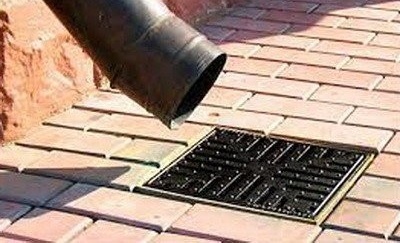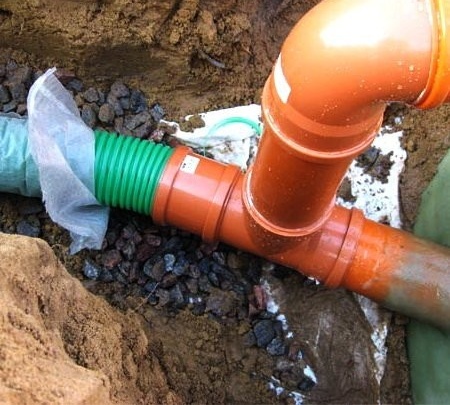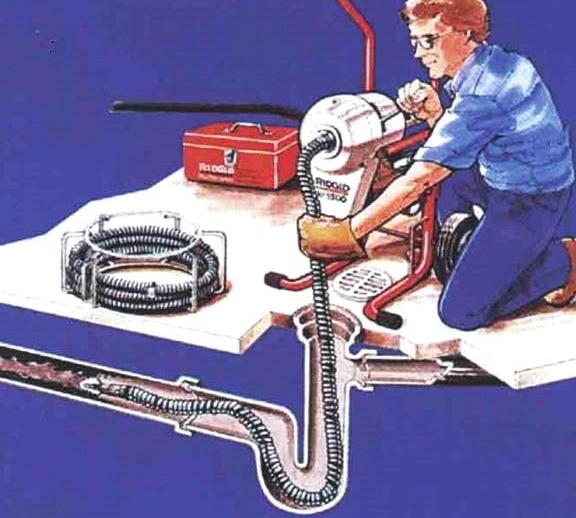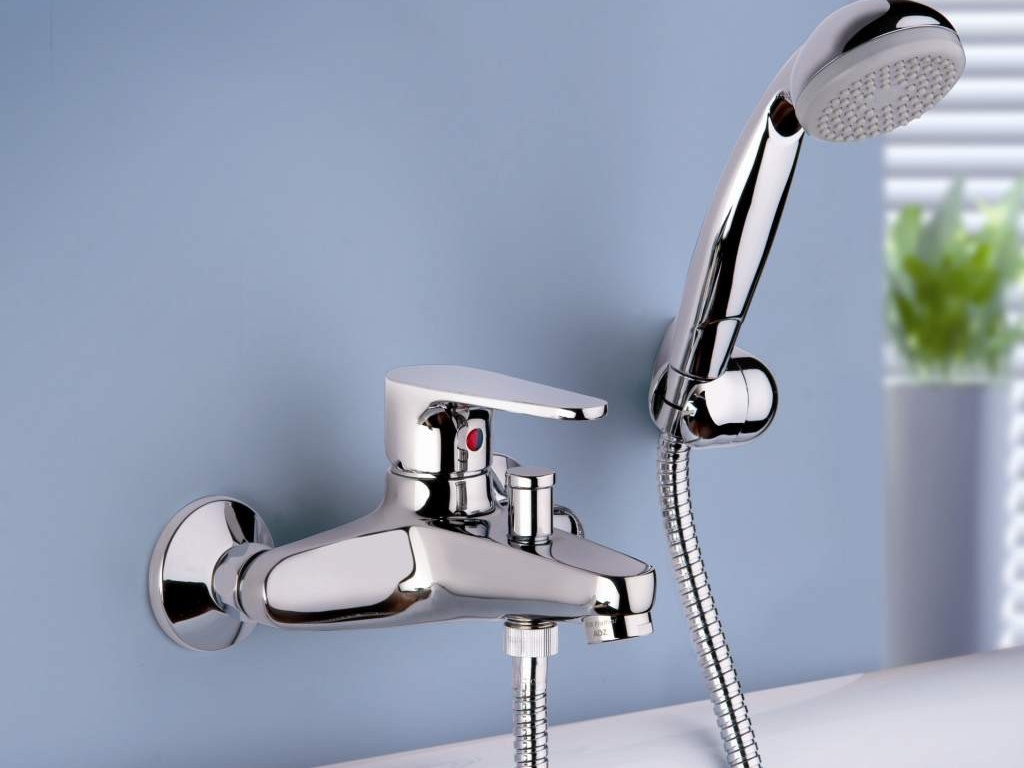How to independently collect a drain from sewer pipes: cheap and effective
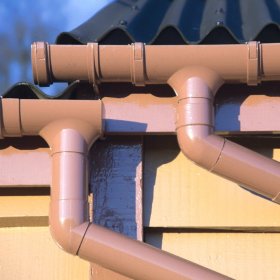
Building your home is a responsible task. Everyone who has done such work knows that even small mistakes made out of inexperience or negligence can turn into big problems. Many do not want to overpay and are engaged in construction on their own. This is quite real, the main thing is to perform all operations strictly according to the instructions. Let's talk about how to properly make gutters with your own hands from sewer pipes.
Each building must be reliably protected from the adverse effects of moisture. No need to think that by installing a roof, builders completely coped with this problem. The roof itself is completely airtight and has a slope designed to prevent water and snow from lingering on it. Thus, moisture sliding from the roof can get on the foundation and walls, which will be constantly wet.
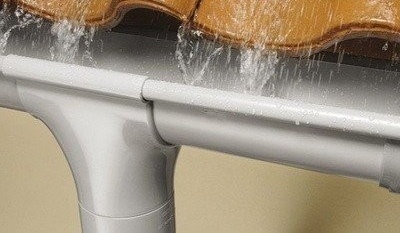
Gutter - a structure that protects the foundation and walls of a building from the damaging effects of rainfall
As a result, they will begin to collapse and quickly become unusable. To avoid such unpleasant consequences, a protective structure called a drain has been developed. It is a system of gutters located around the perimeter of the roof. They collect water flowing from the roof and direct it into vertically standing pipes, through which moisture is transported downward, bypassing the walls.
Areas where drainpipes end usually are equipped with devices for collecting water. It can be all kinds of containers for moisture, but it is optimal to equip your site with storm sewers and bring its inputs to the ends of the drainpipes. Thus, the gutter is a simple but very useful structure that allows you to remove moisture flowing from the roof in any convenient direction.
Content
Is it possible to save on the gutter?
This question is asked by many developers. In the construction markets, various models of finished gutters are sold, which are a kind of designer from which you can easily assemble the desired system. The cost of such sets is quite high.
Home craftsmen have long learned how to independently assemble drains and recommend a system of plastic sewer pipes. The price of such parts is low, their assortment makes it easy to select the necessary elements, and a large assortment of various adapters solves the problem of joints and joints. Another plus in favor of this solution is that plastic is easy to process. Ready drain can be painted in the color of the roof.
Where to begin?
If you decide to manufacture a drainage system from sewer pipes, you should start by purchasing the necessary materials.First, it is desirable to calculate the effective roof area. The amount of rainwater that will be diverted to the system and, accordingly, the diameter of the gutter depends on its value. If you don’t want to bother with calculations, you can use the average values. In this case, to work, you will need:
- pipes with a diameter of 5 cm, which will be used to drain the water;
- pipes with a diameter of 11 cm from which gutters will be made;
- tees for making connections of elements, diameter 11 cm at two inputs and 5 cm at the output.
The project, which is made independently on the basis of the measurements taken, will help to accurately determine the amount of necessary materials. First, measure the length and width of the roof. If it has a complex shape, we measure all the structural elements. We need to calculate the perimeter of the roof. Thus, you can determine the footage of the pipe, which will be used for the manufacture of gutters. Since it will need to be cut in half and two will be obtained from one part, the required pipe length will be equal to half the perimeter of the roof.
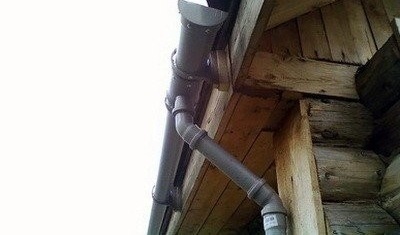
The drainage system made of sewer pipes is in no way inferior to analogues sold in specialized stores
The next step is to determine the number of gutters. To do this, you need to draw a plan of the roof and "arrange" the details on it. It should be remembered that the distance between the risers should not exceed 5 meters. Having determined the number of drains, we calculate the required pipe length. To do this, measure the distance from the eaves overhang to the ground. This will be the height of the gutter riser. Multiply it by the number of parts and get the desired pipe length.
Based on the project received, we determine the required number of tees that will be required to connect the gutters and gutters. It is possible that the latter will not be perfectly straight, but will deviate at a certain angle. So, for example, it is convenient to direct water into a collection tank. In this case, we also consider the number of necessary adapters.
Do not forget about the high-quality sealant that will be needed to lubricate all joints. It is best to take a composition intended for outdoor use or universal. They do not collapse under the influence of UV radiation.
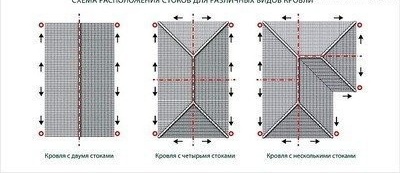
The diagram shows the recommended location of the drain funnels, providing an optimal drain of melt water
Installation technology of a drainage system
After the material is prepared, you can proceed with the installation of the structure.
Gutter manufacturing
We start with the manufacture of gutters, for which you need to saw along a pipe with a diameter of 11 cm. To do this is easiest with a grinder. Some craftsmen recommend removing the protective cover during operation, which at the end of the operation will be covered with molten plastic. It is better not to do this, because in this case the work safety is affected. To get rid of the problem, you need to take a cutting disc with the largest possible diamond spraying. Optimal if it will be with segments. Then, from the tool during cutting, not molten plastic, but small chips will come out.
An electric jigsaw will also do the job well. In order to keep the cut line even, in both cases it is recommended to make a special bounding shape from wood or fix something like a guide on the part. The easiest and most inexpensive way to cut - with a cutter made from a piece of hacksaw blade. In this case, a ruler that acts as a guide is attached to the pipe with tape. On this line, the part is easily sawn with a cutter.
To ensure reliable connections of the gutters, pipe sections 15-20 cm long that are included in the tee are not sawn.
Preparation and installation of brackets
Brackets - parts to secure the gutters. Their size and shape depend on the size of the gutters.If you decide to purchase ready-made items, then no training will be required. Another thing is if they are planned to be made independently. The easiest way to make brackets is by bending strips of durable sheet metal. It is important that the fasteners match the shape and size of the gutter. Ready-made brackets can be fixed in three ways:
- On the windshield. Used when the installation of the roof is already fully completed. Allows fixing brackets without forced dismantling of already installed roof elements.
- On the rafter legs. If there is no windshield in the structure, the parts are mounted in this way. As in the previous case, you can install the brackets without dismantling the installed roofing elements.
- To the roof lathing. Experts believe that this is the most correct way to mount brackets. It is carried out during the installation of the roof. In this case, special elongated clamps are used, which are securely fixed at two points, which allows you to securely fix the brackets.
Having decided on the method of fixing the brackets, we proceed to their installation. In this case, we must take into account the following rules:
- The overhang should protrude 25-65% relative to the gutter closest to the edge of the construction.
- The far edge of the drainage system should be below the visual plane of the roof.
- The gutter must be biased towards the drain. Its value is about 1 cm per linear meter.
Installation is carried out in the following sequence:
- We outline and fix the two extreme brackets. We withstand the necessary slope.
- We pull the building cord between the installed brackets. The resulting straight line will help to mark the fasteners of the remaining parts.
- We install the remaining brackets, given that the maximum step of mounting brackets for plastic elements is 550-600 mm.
- We fasten plastic adapters that act as a drain funnel to the drain.
- Gutter installation
The gutter structure can be assembled directly in brackets fixed under the roof. But it’s easier to assemble the system on the ground, and then lift it to the roof. In any case, the operation is the same.
If it is assumed that the gutters will fit together, you will need to correctly connect them. Two options are possible here. The first involves bonding parts using a suitable composition for propylene pipes. The second is docking using special aluminum clips. In this case, it is imperative to use a sealant that needs to lubricate the joints of the parts.
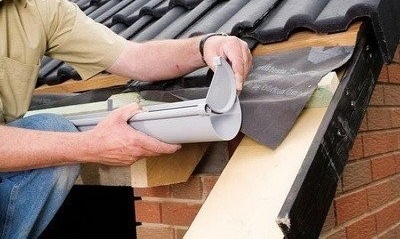
At the end of the installation of the gutter, a plug must be installed in the uppermost part of the drain
After the structure of the gutters is assembled and laid on the brackets, it is necessary to insert the adapter pipes, obtained from the non-sawn pipe sections, into the tees, acting as a drain funnel. Installation of pipes is carried out in the same way as during the installation of sewage. They are lubricated with sealant and inserted into the tee. A plug is necessarily installed on the uppermost part of the gutter of the gutter system.
Installation of gutters
The assembly of gutters is similar to the assembly of gutters. If you want to install an adapter, it connects to the pipe end-to-end with the mandatory use of sealant. Installation of risers is carried out in compliance with the following rules:
- The pipe must be at least 10 cm from the wall.
- The riser is attached using special clamps, for long pipes they will need several.
- Pipe installation is carried out in the direction from bottom to top.
- The installation step of the fasteners is 1.8 m.
- The upper pipe is connected to a tee, acting as a funnel. When installing, sealant must be used.
The bottom of the riser can be connected to the pipe storm sewer. In its absence, a special elbow is performed, under which a container is subsequently installed to collect rainwater.
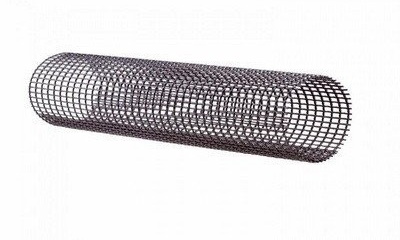
From a plastic mesh rolled into a roll, an excellent filter for a drain is obtained. It reliably protects the gutters from large debris
The drainage system from sewer pipes is almost ready. It remains to protect her from large debris. To do this, you can use a homemade filter. You need to take a plastic coarse mesh and roll it into a roll, focusing on the size of the gutter. So that the material does not turn around, it is fixed with plastic clamps. Then they are laid in the gutters. Such a filter will reliably protect the drainage system from fallen leaves and other large debris.
Flat roof gutter system
A flat roof is distinguished by the absence of slopes, respectively, and the drainage system in this case is mounted differently. However, as in the case of pitched roofs, it can be made of plastic sewer pipes. Flat roofs are equipped with an internal drain. Most often, the slope of such roofs is directed to the center of the house, where the funnels of the drainage system are located. Depending on the area of the roof, there may be several or only one. The funnel is rigidly attached to the screed for waterproofing and connected to the pipe of the internal drain.
A waterproofing carpet glued to the funnel ensures complete tightness of the joint. Outlet pipes are installed in the insulation layer. Usually they go to the technical room, connect there with a sewer riser, from where water is discharged into a stormwater drainage.
If polypropylene pipes are selected for the internal drain, they should be mounted with a small technological gap, which is necessary for temperature compensation of the pipe material. For the same purpose, the pipe can be equipped with an insulation layer.
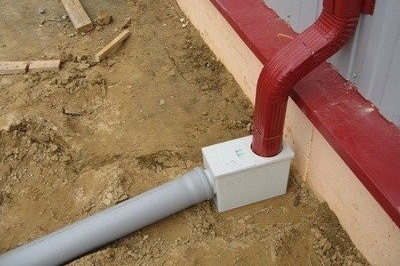
The drain pipe can be connected to the inlet of a storm sewer. An example of a competent node execution
If the roof is equipped with several funnels connected to the drainage system, remember that the diameter of the horizontal parts must be less than the diameter of the funnel. So it will be easier to install a funnel in the roofing cake. Adapters are installed on the connection areas of horizontal and vertical elements. Parts are mounted end-to-end with the obligatory use of sealant. Gutter riser elements are connected to each other and to the funnel using special glue.
Some tips from professionals:
- Gutter funnels should be placed evenly on the lowest sections of the flat roof.
- The funnel bowl should not be supported by thermal insulation. A wooden beam, pre-treated with an antiseptic, is laid under it. The part is fixed to the base of the roof. The funnel is attached directly to the beam.
- The outlet of the funnel should be located above the freezing point. This is necessary to prevent freezing of ice plugs in it. If this is not possible, it is worth installing a funnel with electric heating. In addition, if the distance from the roof to the heated room is more than a meter, it is worth warming up the horizontal drain. Otherwise, with the formation of an ice plug, the insulation will play the role of a thermos and will retain ice for a long time, which in turn will interfere with the normal removal of moisture from the roof.
Properly organized drainage system reliably protects the walls and foundation of the building from moisture. The easiest way to purchase a set of parts for the assembly of the drain. Such products are sold in specialized stores and are quite expensive. But you can significantly save by collecting a drainage system from plastic sewer pipes. This will require patience, accuracy and strict adherence to instructions.The finished system can be painted in the color of the roof, and it will not differ at all from the expensive purchased design.

